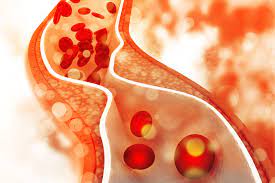Asthma, characterized by difficulty in breathing, is a chronic lung condition. Asthma patients have hyper responsive airways that narrow down when irritated. This makes air movement difficult and cause wheezing, coughing, shortness of breath and chest tightness. The two factors that provoke asthma are –
· Triggers – They irritate the airways and result in Bronchoconstriction. The common triggers of Bronchoconstriction are cold air, dust, strong fumes, inhaled irritants, emotional upsets and smoke.
· Causes or Inducers – They result in symptoms which may last longer. Allergies in the form of pollen, animal secretion and molds, and Respiratory viral infections are the most common inducers.
Asthma diagnosis is important for proper treatment. The common symptoms for asthma are allergies, hay fever and eczema. The chance of a child developing asthma is much more when there is a family history of allergies and asthma. The common symptoms of asthma in children are breathing problem, repeated nasal stuffiness, itchy eyes, eczema, hives and persistent cough followed by cold. Diagnosis of asthma involves physical examination, chest x-ray, blood tests and sputum studies, allergy prick skin testing, challenge tests, differential diagnosis and a trial use of asthma medications.
Asthma affects twice as many boys as girls in childhood. It affects more teenager girls than boys. In adulthood, the ratio becomes equal. The risk of uncontrolled asthma is greater than the risk a mother or fetus faces due to medication used to control asthma. Uncontrolled asthma during pregnancy can produce serious maternal and fetal complications like premature birth, low birth weight and maternal blood pressure changes.
The most effective treatment for asthma is identifying triggers, such as pets or aspirin, and limiting or eliminating exposure to them. Anti-inflammatory medications with Bronchodilators are used for immediate relief of symptoms. Asthma medications come in various forms like a metered dose inhaler or a puffer, dry powder inhalers and nebulizers.
The prognosis for asthma is good for children with mild disease. For asthma diagnosed during childhood, 54% will no longer carry the diagnosis after a decade. Asthma seems to be more prevalent in athletes than the rest. A relatively high incidence of asthma is found in sports such as cycling, mountain biking, and long-distance running, and a relatively lower incidence is found in weightlifting and diving. The exercise-induced asthma shares many features with allergic asthma.
Exercise studies are helpful in diagnosing and assessing this condition. People with mild asthma (infrequent attacks) may use relief medication as needed. Those who have persistent asthma should take control medications on a regular basis to prevent symptoms from occuring. A severe asthma attack requires a medical evaluation and may need hospitalization, oxygen, and intravenous medications.







